Air Operations, CBI During the night 6 7th Heavy Bomb Group B-17s attack the Rangoon port area and the Rangoon/Mingaladon airfield.
[  | |   ] ]
Air Operations, Europe
BOMBER COMMAND
- 6 Bostons are sent to attack the Dieppe port and railway yards. None are lost.
- 193 aircraft including 98 Wellingtons, 27 Stirlings, 21 Lancasters, 19 Halifaxes, 19 Hampdens and 9 Manchesters are sent to bomb Warnemünde and its nearby Heinkel aircraft factory. There are no details from the ground about results but Bomber Command reported 'the attack was only moderately successful'. 19 aircraft including 8 Wellingtons, 4 Lancasters, 3 Hampdens, 2 Halifaxes, 1 Manchester and 1 Stirling are lost.
- In minor operations, 3 Blenheim Intruders are sent to Leeuwarden and 3 planes lay mines of Heligoland. There are no losses.
[  | |   ] ]
Air Operations, New Guinea 8th Pursuit Group P-39s shoot down 2 A6M Zeros over Port Moresby between 1455 and 1530 hours.
[  | |   ] ]
Battle of the Atlantic The unarmed US freighter Ohioan (6078t) is torpedoed by U-564 4-1/2 miles off the coast of Florida. She sinks so quickly no lifeboats could be launched. Coast Guard craft rescue 22 survivors of the 37-man crew.
[  | |   ] ]
Britain, Home Front Archibald Sinclair, Secretary for Air, speaking in Birmingham, says that the RAF does not wish to destroy historic German cities but 'we must and will destroy the enemy's means of making war - his defenses, factories . . . wherever they may be found . . . a terrible summer is in prospect for the German Air Force. By day and night, in the air and on the ground they will be exposed to unrelenting attacks . . .'
[  | |   ] ]
Britain, Policy The British Foreign Office announces that British commanders in Madagascar have assured French authorities there that the island would remain French and revert to French sovereignty after the war. These assurances are given 'in return for their co-operation and in order to avoid bloodshed.'
[  | |   ] ]
Burma The Japanese take Myitkyina, and important rail terminus and air base in northern Burma. In a futile attempt to stem the Japanese Burma offensive, the Chinese 5th Army has been sent to occupy defensive positions around the town, but was unable to halt the Japanese 15th Army.
[  | |   ] ]
Eastern Front The first real German attacks of the year begin slowly with an offensive by 22nd Pzr Div of 11th Army in the Crimea aimed at clearing the Kerch Peninsula. The Germans begin by testing the strength of the Russian forces in readiness for a large-scale summer offensive. The ultimate objectives are the oil fields of the Caucasus.
SOUTHERN SECTOR
The German 11th Army launches Operation BUSTARD as the XXX Corps attacks the 44th Army frontally. For this task it deploys the XXXII, VII Romanian and XXX Corps (LIV Corps covers Sevastopol). At the same time, an assault force lands behind the coastal flank of the 44th, unhinging the shaken Soviet defenses. In the center of the line, the XLII Corps also attacks but is held up on strong Soviet defenses. After a brief battle the southern wing of the 44th Army collapses, enabling the XXX Corps to introduce its mobile units into the battle.
Russian Tanks Lead a Counter-Attack
|
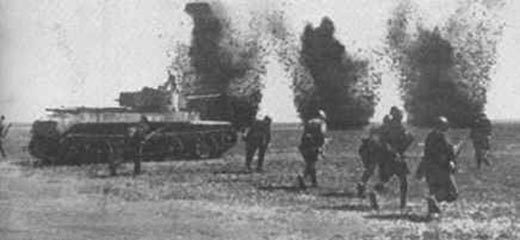 |
|
Russian Troops Firing at the Advancing Germans
|
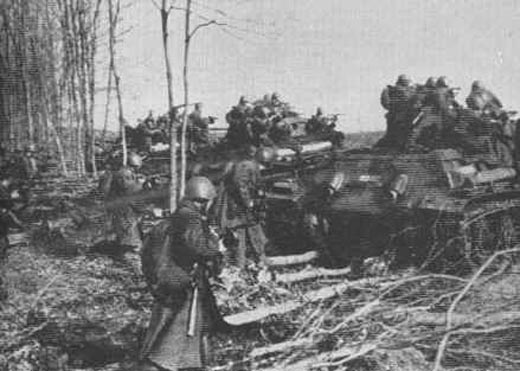 |
|
[  | |   ] ]
Mediterranean The British submarine Olympus, carrying survivors from Pandora, P-36 and P-39, sinks after hitting a mine leaving Malta Harbor. A total of 88 men are lost. 9 survivors, 3 from Olympus and 6 from P-39, manage to swim ashore.
[  | |   ] ]
Pacific - Japan's hope to exploit the capture of the Dutch East Indies oil fields receives a jolt when the Japanese liner Taiyo Maru (14,000t) is sunk by the American submarine Grenadier (SS-210) off Hong Kong. 900 oil industry experts and technicians, travelling to the East Indies to reactivate oilfields, are drowned. Loss of the men seriously affect Japan's fuel supplies for a time.
- The US submarine Skipjack (SS-184) attacks a Japanese convoy about 125 miles east of Cam Ranh Bay, French Indonesia, and torpedoes and sinks the army cargo ship Bujun Maru (4804t).
[  | |   ] ]
Philippines Gen Wainwright sends word to the various military commanders authorizing them to surrender their forces.
MINDANAO
The Japanese resume their offensive in the evening and continue it throughout the night. The defeated 62nd Infantry is pursued toward Dalirig.
Pres Quezon arrives in San Francisco.
[  | |   ] ]
Battle of the Coral Sea Reconnaissance aircraft from each fleet sight their enemy virtually simultaneously and all the carriers dispatch strikes. The Lexington (CV-2) is badly hit and abandoned and the Yorktown (CV-5) is damaged. The Lexington is later finished off by the American destroyer Phelps (DD-360). The Shokaku is seriously hurt. The Japanese losses in aircraft have been especially severe and with them have gone irreplaceable, highly trained pilots. The Japanese are forced to abandon their attack on Port Moresby and this, the first real check to the Japanese advance means that the action can be justly described as a strategic victory for the Americans. This is the first major naval battle fought without visual contact between the main bodies of opposing forces.
USS Lexington as Seen from the Yorktown
|
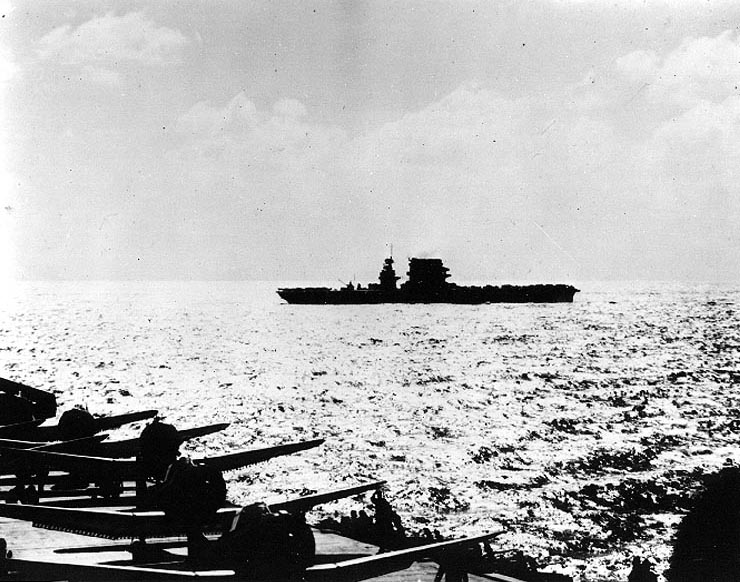 |
|
The Lexington Under Attack
|
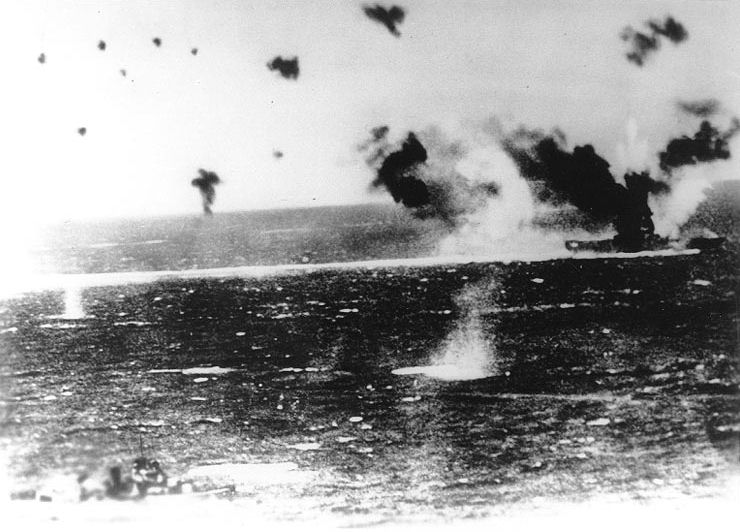 |
|
The Shokaku Under Dive-Bombing Attack
|
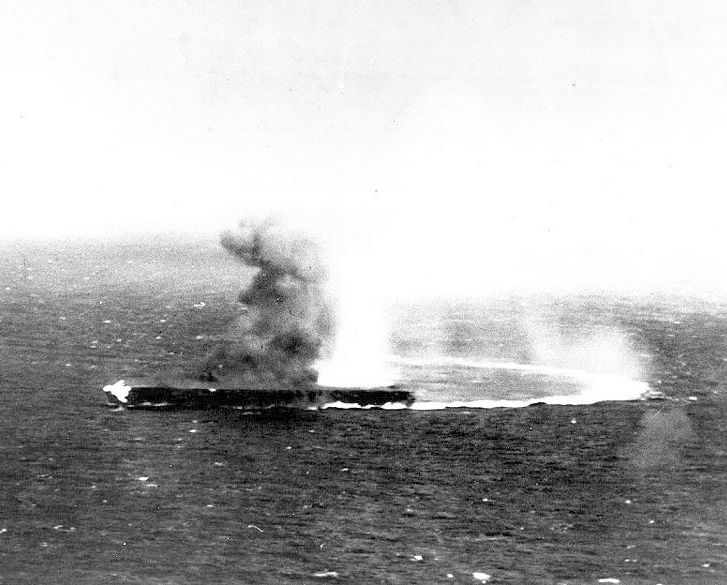 |
An Explosion Aboard the Lexington
|
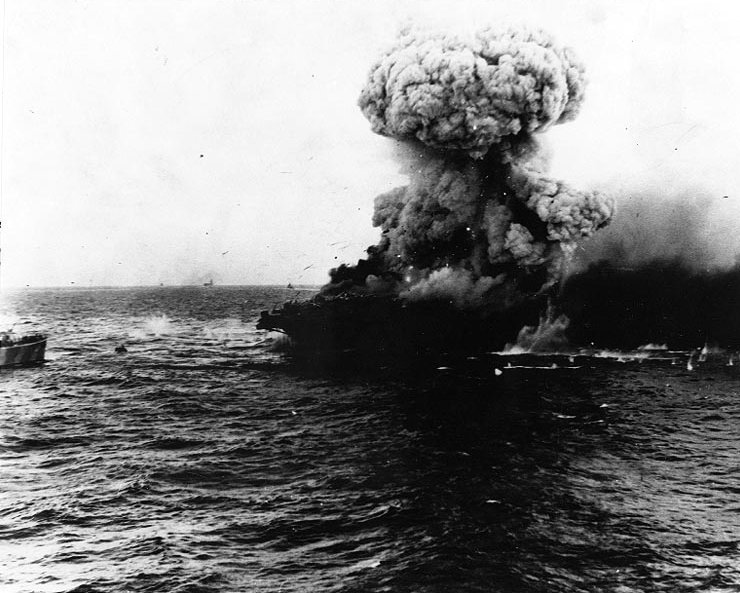 |
|
The Lexington On Fire
|
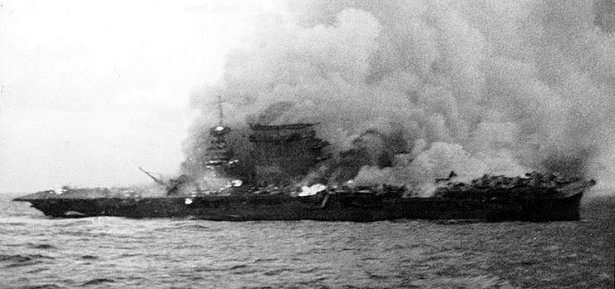 |
|
The Smoking Deck of the Lexington
|
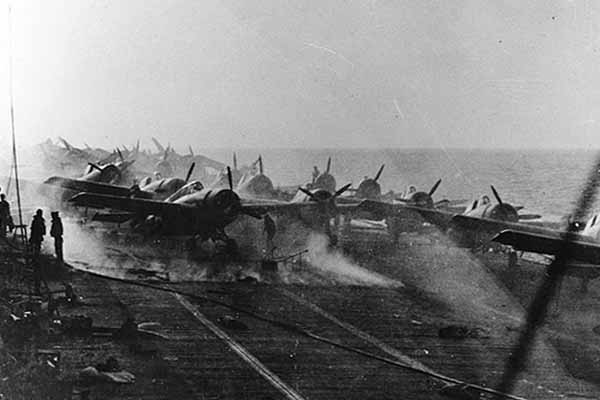 |
|
Crewmen Abandon Ship On Board Lexington
|
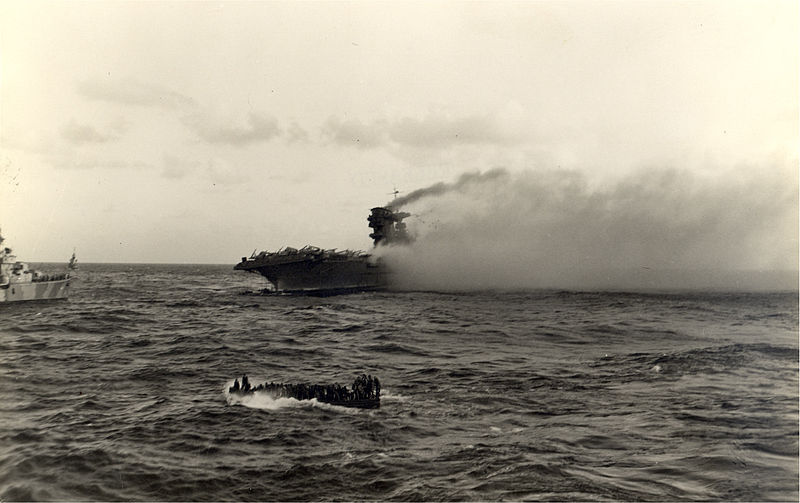 |
|
Map of the Battle of the Coral Sea
|
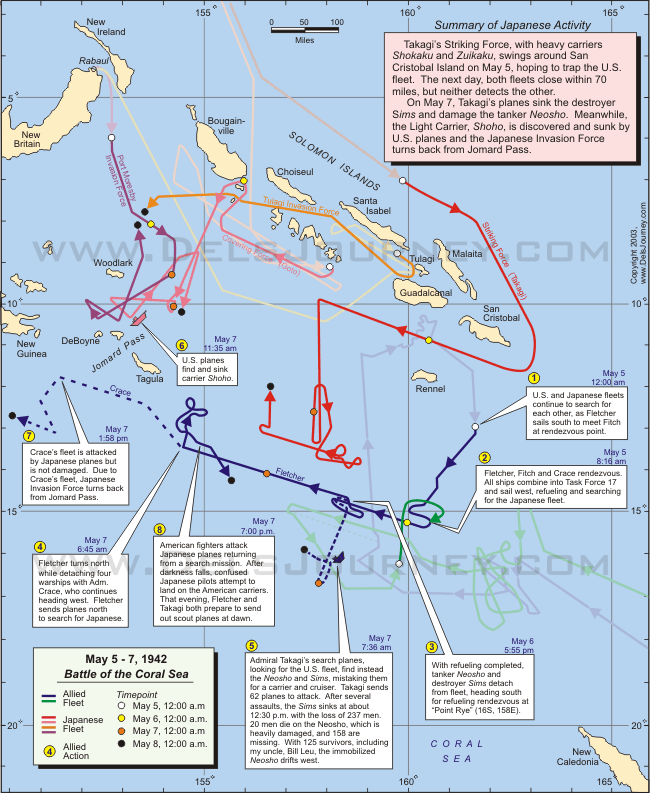 |
[  | |  ] ]
|









